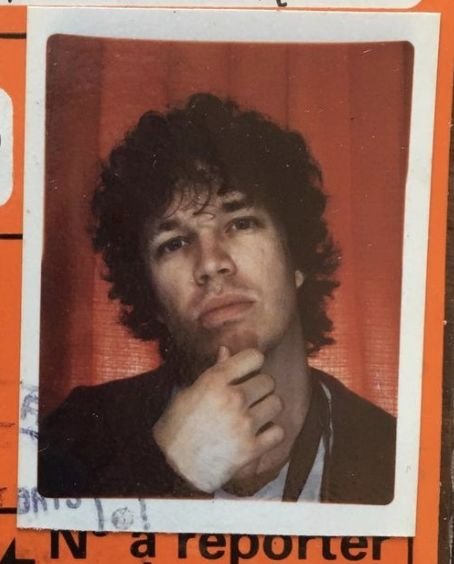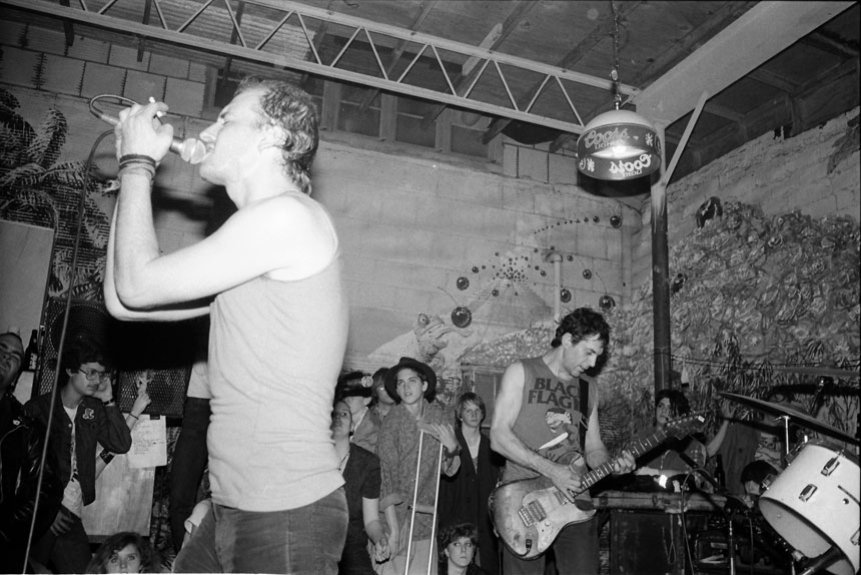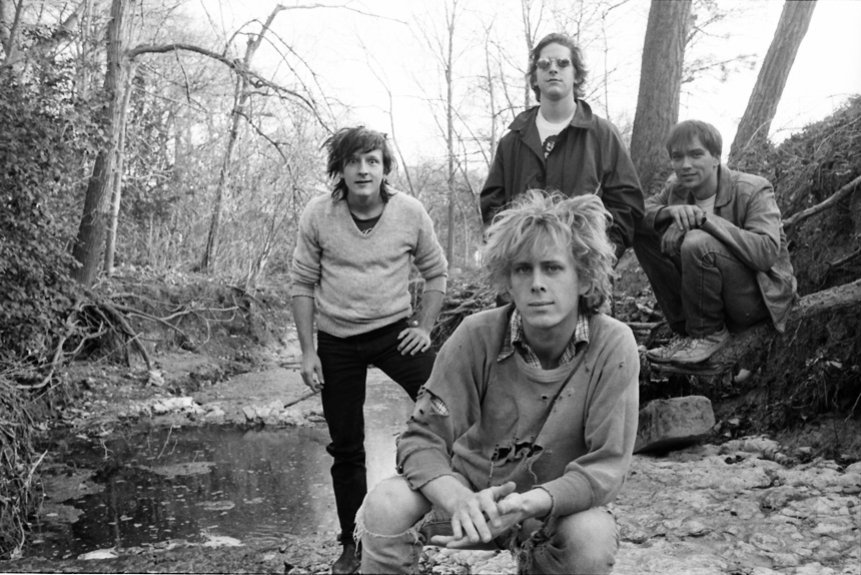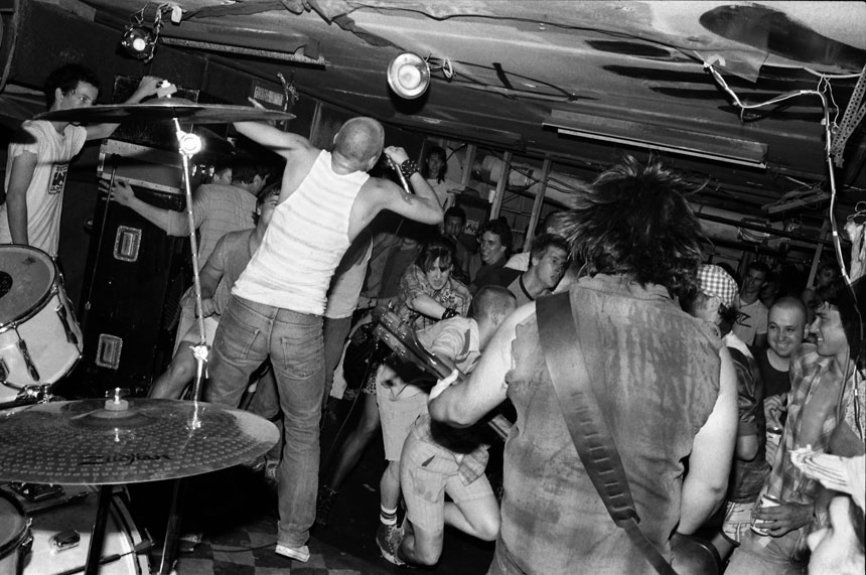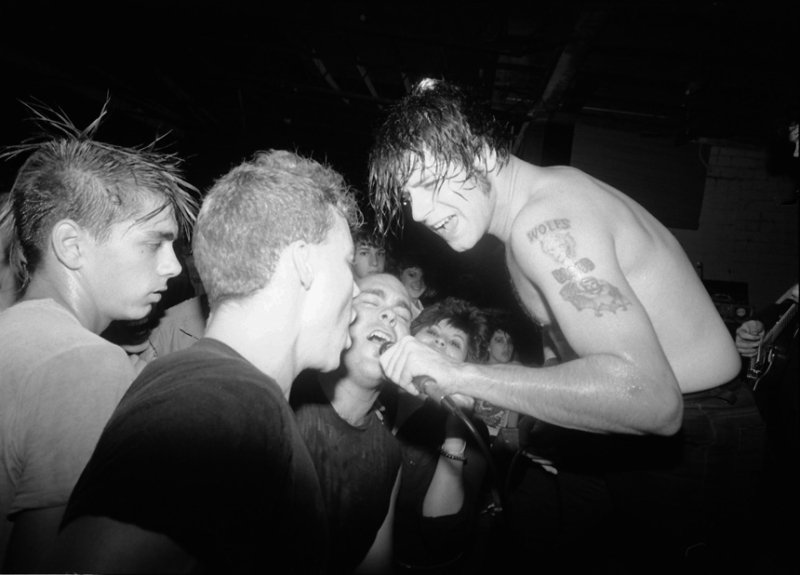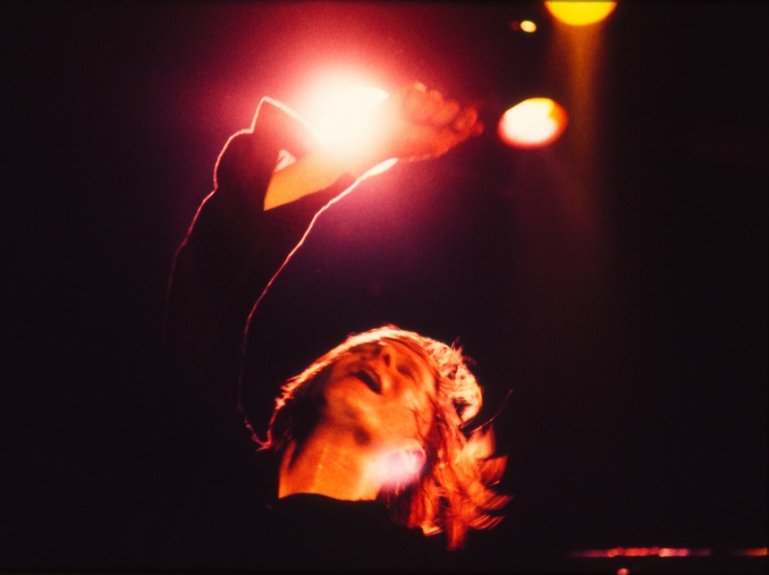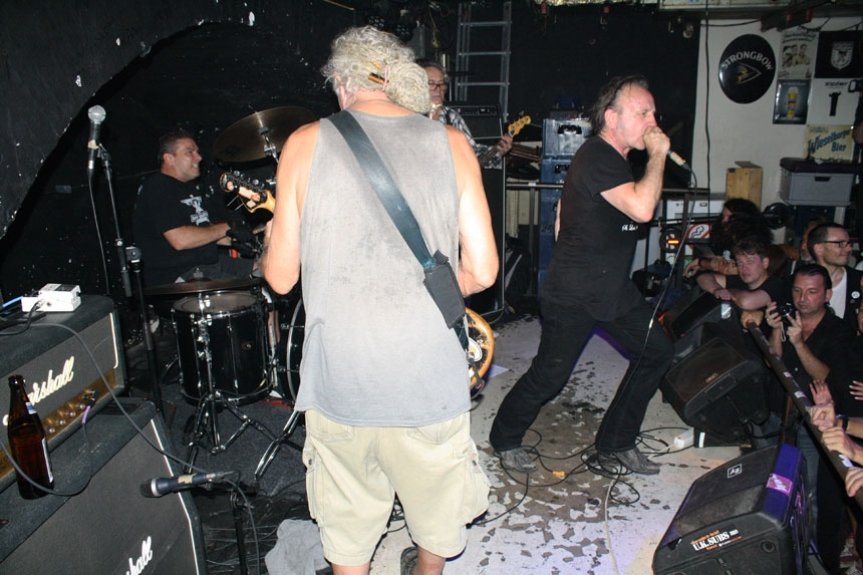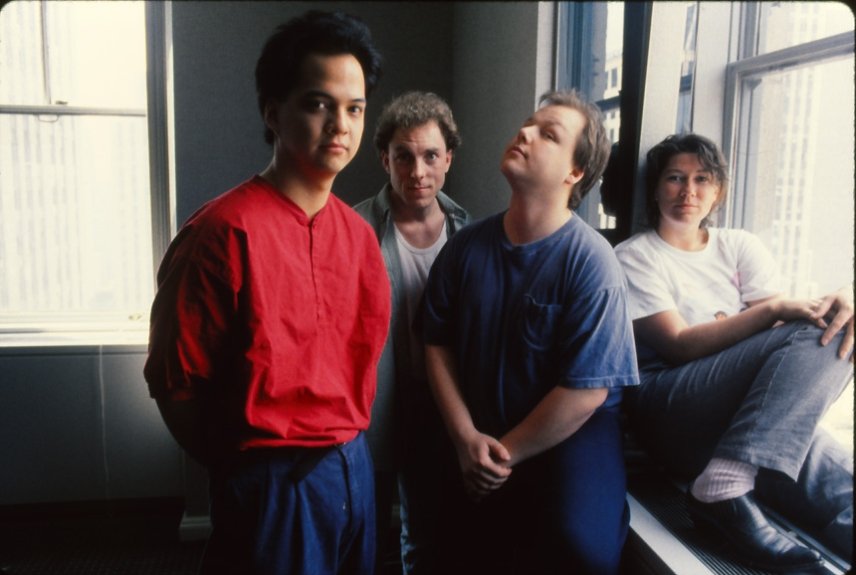The Pat Blashill Interview
When and where were you born? Are you originally from Austin, TX? What was growing up like for you? When did you first begin to fall in love with music and what was it that initially fascinated you about it?
I was born in 1961 and raised in Austin. I was a bookworm, then a drama fag, then a stoner, then class photographer. I had always loved pop and rock music---when I was little I would fall asleep listening to classic rock on KNOW, the local Austin AM radio station. I distinctly remember hearing both the Moody Blues’ “Nights in White Satin” and Bob Dylan’s “Lay Lady Lay” at 2 or 3 in the morning and wondering what these very adult sounds and words might mean. When I was about five, my parents gave me Magical Mystery Tour by the Beatles. A little later, when I started getting an allowance, the first record that I bought with my own money was ZZ Top’s Tres Hombres. I loved all of it—some of it seemed magical and mysterious, but all of this music seemed to be making promises to me about my life to come.
What would you and your friends do for fun in those early days? Did you go to many local shows/concerts in your area? What was the music scene in your community like back in those days? What groups, artists, photographers, etc. made a huge impact on you early on?
My stoner friends and I would get high and hang out—we had a couple of pretty cool treehouses, but also lived near some nice woods with limestone cliffs. Austin and the Texas Hill Country is very green and psychedelic—that may explain some of its history of trippy music and freaks. We also shoplifted candy and played pinball at corner stores like 7-11, U-Totem and Stop and Go. Stupid teenage boy stuff, good clean fun. I started going to arena show concerts when I was about 14. My first show was Lynyrd Skynyrd opening for the Doobie Brothers—Skynyrd was awesome!! Then I saw Pat Travers, Rush, and some real horrible mullet rock like Triumph. The best club was the Armadillo World Headquarters, which was sort of Ground Zero for the cosmic cowboy scene, but they booked everyone. They also served real Tex-Mex nachos, which just made everything better. Eventually I started listening to slightly weirder, or more sophisticated groups like Roxy Music and Little Feat, who also played the Armadillo.
My photography started when my father bought Instamatic cameras for my brothers and I, so my dad was probably my first photographic influence. I took a 35mm photography class in high school, then started taking pictures for the yearbook. Then the teacher, a man named George Edwards, showed me some pictures by Robert Frank and it was all over—I was a weirdo photographer. I started looking at all sorts of art photography, photojournalism, commercial photos, but especially documentary photography. I would go to the Austin public library and pull out armloads of photobooks and just gawk at them and try to figure out why some of it looked so cool. Besides Frank, I especially loved Man Ray, Danny Lyon, Harry Callahan, Lee Friedlander, Andre Kertesz and others. I looked at Diane Arbus’s pictures, and even though I think they were too intense for me, she’s still an important influence. Larry Clark too, even though his pictures of junkies and teenage fuckups sorta hurt my feelings.
Did you participate in any groups yourself? How did you initially become so fascinated in shooting photography? Do you recall your very first camera and what that experience was like for you to hold, as well as, look through it?
If you mean musical groups, I did get involved with some crazy art punks when I got to the University of Texas. They convinced me to move to San Antonio with them to form a band where everyone would play every instrument. But they were just too avant-garde for me, and I started to miss Austin. Eventually, they got mad at me because I still listened to Elton John and I occasionally ate ham sandwiches! They kicked me out of the band and I moved back to Austin…. I got my first 35mm camera while I was still in high school. It was a Canon TLB, and I lost it a week later on a school trip. So I saved up some more money and got another one—I think I still have that one somewhere! When I first started using these Canon single lens reflex cameras, they probably felt a little heavy to hold, but I got used to that quickly. I took my camera with me everywhere and took pictures of everything. I don’t know if I really know why making photographs is so pleasurable for me. Maybe I’ve always wanted to capture certain scenes and moments because life is so fleeting, but you’d have to ask my therapist about that. I really like composing a picture—one of my teachers called it “organizing information within the four lines of the frame,” and that’s a great description of the photographic process.
Tell me about attending the University of TEXAS in Austin. When did you enroll and what were those times like for you? Who among the scene during that time did you become close with?
I started classes at UT in the fall of 1979, and I started going to punk shows at the same time. I liked my classes well enough, but I wasn’t crazy about going straight to university right after high school. Eventually, I took a year off, and that’s when I met the crazy art punks I wrote about above. I had great photography teachers at UT, and a couple of them gave me advice I still use. In the art school, professor Ellen Wallenstein once told me that if you are somewhere shooting, get into a good place, frame up on a scene, and then just stay there and watch it unfold and change—good pictures will happen. And in the journalism department, professor Dennis Darling suggested that photographers should somehow photograph their own life, because those pictures will then mean more to them when they get older. That really turned out to be true about my punk rock photos. As I mentioned, I had started going to punk shows, and quickly became a regular at Raul’s, the first punk club in Austin (and not coincidentally, it was located right across from the university campus.) Following the advice of my teacher, this became the aspect of my life that I documented. I started going to shows at the invitation of Steve Collier, who was the drummer for the Big Boys and would become one of my dearest friends. Once at Raul’s, I became friends with David Yow and David Sims, who would later form Scratch Acid and then the Jesus Lizard. Yow was (and still is) one of the funniest humans I’d ever met.
The Almighty Roky Erickson.
From Left to Right: Flipper, Sratch Acid, The Butthole Surfers and The Offenders
Meat Puppets.
Tell me about the radically amazing music scene in Austin back in the day. What shows stand out in your mind that you attended as well as shot? What was your main vision, or focus as a young photographer during this time? What did you look for in a subject(s) when shooting? What was the energy of those times like? That’s one element I’m most curious about.
It’s important to say that I was photographing new wave and punk shows as early as 1979, but I wasn’t very good at it for the first few years. One show that stands out and I wish I had photographed was the Punk Prom at the Armadillo in 1980. This was the Dicks’ first show, and they were terrifying: so, so angry and aggressive. It was years before I understood just how great and singular their music was underneath all that menace. The Big Boys were the most beloved Austin punk band, and I wish I had photographed them more. I tried to see every show by the Butthole Surfers, Poison 13, Rank and File, Scratch Acid, Doctors’ Mob. They were all very different bands. That’s one thing that was unique about the Austin scene: it was very musically diverse, as well as feminist and very queer for a US post-punk and hardcore scene. As a photographer, I wanted to photograph everything about the scene, including the larger-than-life characters in the audience, the aftershow parties, my friends at home and offstage and even their crashpads and bedroom.
The Late Daniel Johnston.
From Left to Right: Samhain, Swans, Babes In Toyland and Flipper.
Husker Du.
Years later, when I was putting our book together and thinking about it in context with other documentary photography of US punk (like the work of Charles Peterson, Glen E. Friedman, Melanie Nissen, BC Kagan and Bill Daniel), I noticed that I was one of the only ones who didn’t concentrate strictly on performance but also followed people around in their daily lives. I think I was trying to capture the tremendous style, drama, ferocity and creativity of our scene. Many of my friends were making great art out of almost nothing at all, and I think as a whole, we created a kind of family out of a group of people who felt out of place or marginalized deep in the heart of Texas. Lots of people had had difficult or even abusive relationships with their first families, and in the punk scene, they finally found a place that was safe for them. I didn’t really come from a broken home, but I’d always hated the racism and machismo I saw around me when I was growing up, and at places like Raul’s, Club Foot, Uncle Sue-Sue’s and Voltaire’s Basement, I met lots of new kinds of Texans, lots of non-assholes.
Dinosaur Jr.
The Replacements.
I know I'm jumping forward a bit, but I’m very curious to know all about your book, “Texas Is The Reason: The Mavericks Of Lonestar Punk.” How long did it take you to construct this thing? Did you know you would eventually create a book that consisted of all this cosmic evidence later down the line?
I had always wanted to make a book out of these pictures. They’re probably my best photographs and they really capture that crazy and unique scene. In 2013, I almost lost my best friend to cancer, and it made me realize I’m not getting any younger myself. So I finally started scanning my old negatives, making a website, organizing the book and then pitching it to publishers. I got in touch with Ian Christe at Bazillion Points, and he did everything right. He understood what the book could be, he listened to my ideas about it--but also changed some things for the better, and he always returned my e-mails! Editing and production of the book didn’t take too long, but getting it into stores was tougher. Bazillion Points uses a Hong Kong publisher, and that country was just getting over all those riots there in 2019 when Ian sent the book to the printers. Then because of Donald Trump’s trade battles with China, worldwide shipping was all messed up, so that delayed the book’s publication. And finally, just as the book was ready to ship to bookstores, Covid-19 hit the US, and bookstores started closing down along with everything else! But it all turned out okay in the end, and it’s just been a really positive experience for me.
MBV!
Pixies.
The great Sonic Youth.
What has it been like for you to now have such an incredible body of work out in the world and for it to be accepted and adored by not only the band’s and its members, but of the great Richard Linklater and Kim Gordon? What are you most proud of about the publication of your book?
When I first got my copy of the book and it suddenly—finally—felt real to me, I was a little shocked at how up close and intimate it is. I really got into people’s faces and inside their lives. At the time, I was just that guy with the camera, but now I realize how generous my friends and acquaintances were to let me into their world. That’s why I call it “our book.” I’m over-the-moon grateful that I’ve gotten such respect and support from artists whom I respect, such as Rick, Kim and the great music journalist, Michael Azerrad. They’re all fellow punk rock travelers. The thing that probably makes me the most happy about Texas Is The Reason is that the people in the photos themselves like the book. They seem to feel like I stood in the right places, chose the correct perspective and told the real story. I’m very proud of that.
Nick Cave.
The Butthole Surfers.
Robert Smith of The Cure.
I understand you currently live in Austria, correct? What led you to move from TX and there? Did you still come back and visit from time to time? You mentioned in our correspondence that you're taking a train for your vacation. Are you currently working on anything at this time?
I left Austin in 1987 and moved to New York City. In 1998, I met and fell in love with a wonderful woman from the Vorarlberg region of Austria. We decided to try living in Vienna after we adopted our first daughter, and it’s become forever. I go back to the US every year or so and I still miss it very much. I am working on a new book about Texas punk rock, but this one will be an oral history for the University of Texas Press. “Texas Is The Reason” was a lot of photographs and a little writing, but this new one will be the reverse: lots of great storytelling and dialogue about the scene from all of the people involved, interspersed with a few really good photos by me and some of the other photographers who were there. I will have to call this one “our second book.”
You can order a copy of Blashill’s book here! https://www.bazillionpoints.com/books/texas/
Is there anything else you would like to further share with the readers?
Vote. Tell your people you love them. And tip your bartenders.
https://www.instagram.com/patblashill/
Dakota Brown







